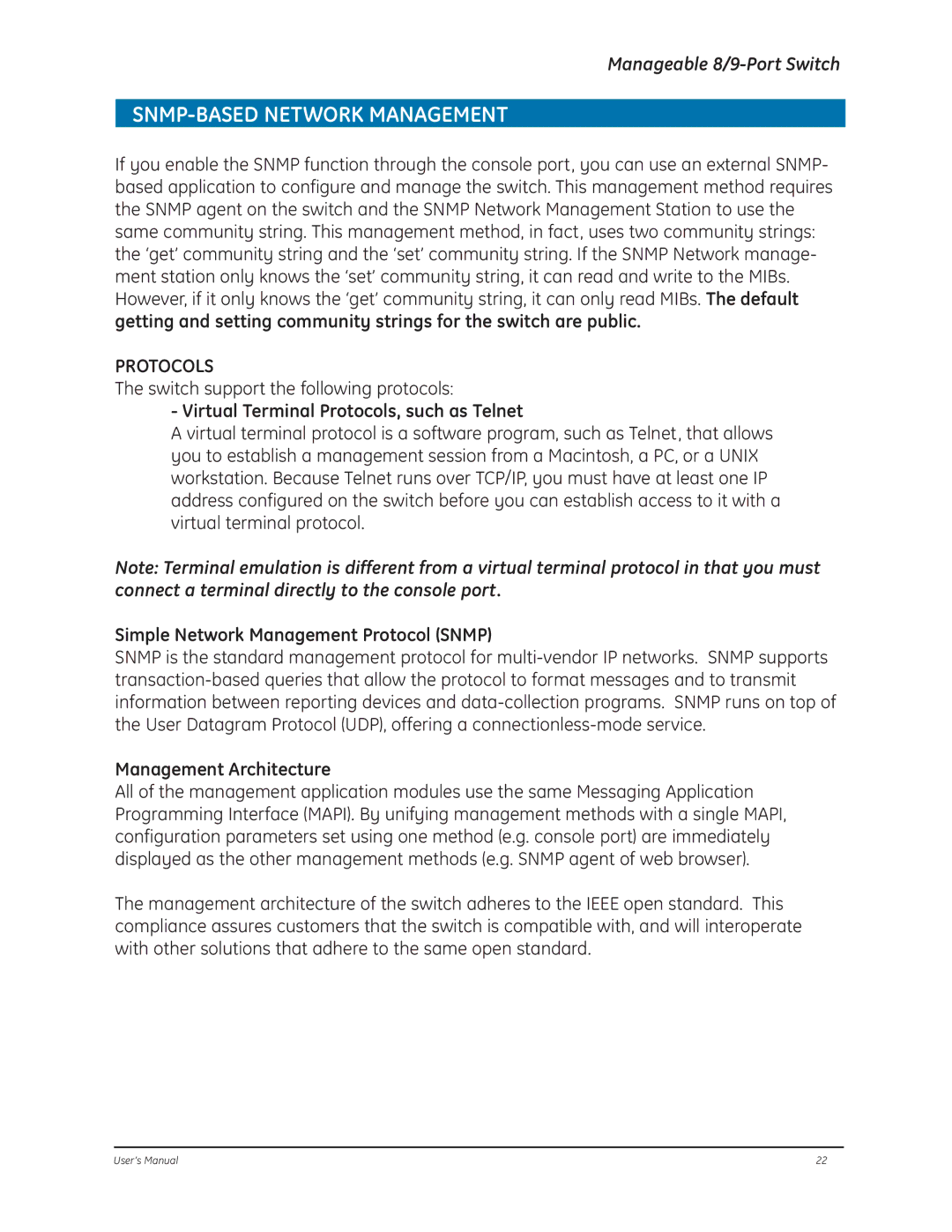
Manageable
SNMP-BASED NETWORK MANAGEMENT
If you enable the SNMP function through the console port, you can use an external SNMP- based application to configure and manage the switch. This management method requires the SNMP agent on the switch and the SNMP Network Management Station to use the same community string. This management method, in fact, uses two community strings: the ‘get’ community string and the ‘set’ community string. If the SNMP Network manage- ment station only knows the ‘set’ community string, it can read and write to the MIBs. However, if it only knows the ‘get’ community string, it can only read MIBs. The default
getting and setting community strings for the switch are public.
PROTOCOLS
The switch support the following protocols:
- Virtual Terminal Protocols, such as Telnet
A virtual terminal protocol is a software program, such as Telnet, that allows you to establish a management session from a Macintosh, a PC, or a UNIX workstation. Because Telnet runs over TCP/IP, you must have at least one IP address configured on the switch before you can establish access to it with a virtual terminal protocol.
Note: Terminal emulation is different from a virtual terminal protocol in that you must connect a terminal directly to the console port.
Simple Network Management Protocol (SNMP)
SNMP is the standard management protocol for
Management Architecture
All of the management application modules use the same Messaging Application Programming Interface (MAPI). By unifying management methods with a single MAPI, configuration parameters set using one method (e.g. console port) are immediately displayed as the other management methods (e.g. SNMP agent of web browser).
The management architecture of the switch adheres to the IEEE open standard. This compliance assures customers that the switch is compatible with, and will interoperate with other solutions that adhere to the same open standard.
User’s Manual | 22 |
